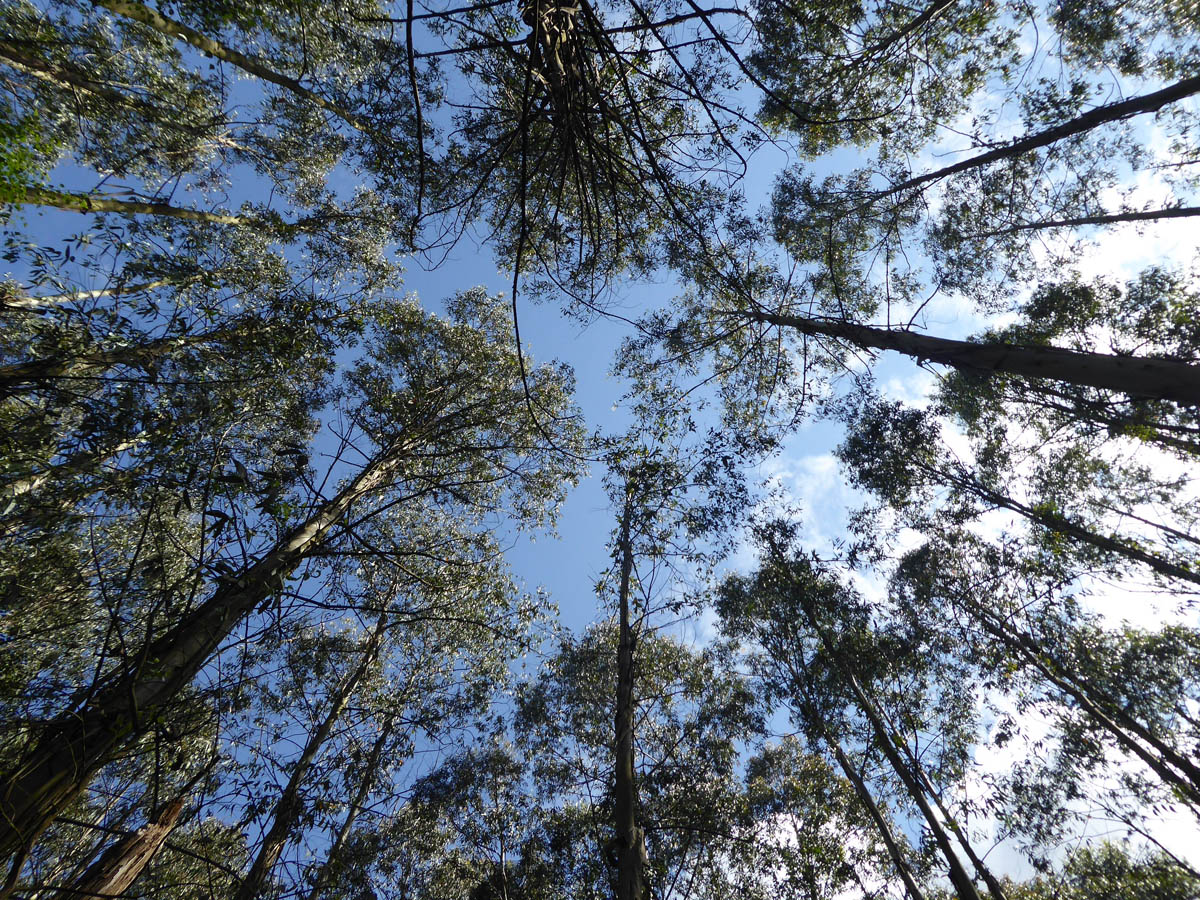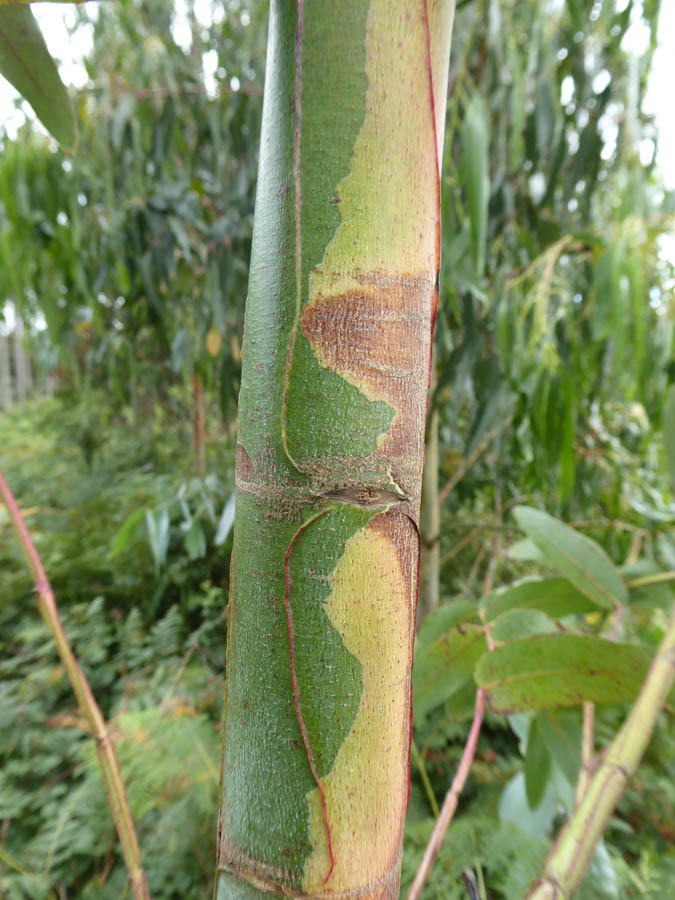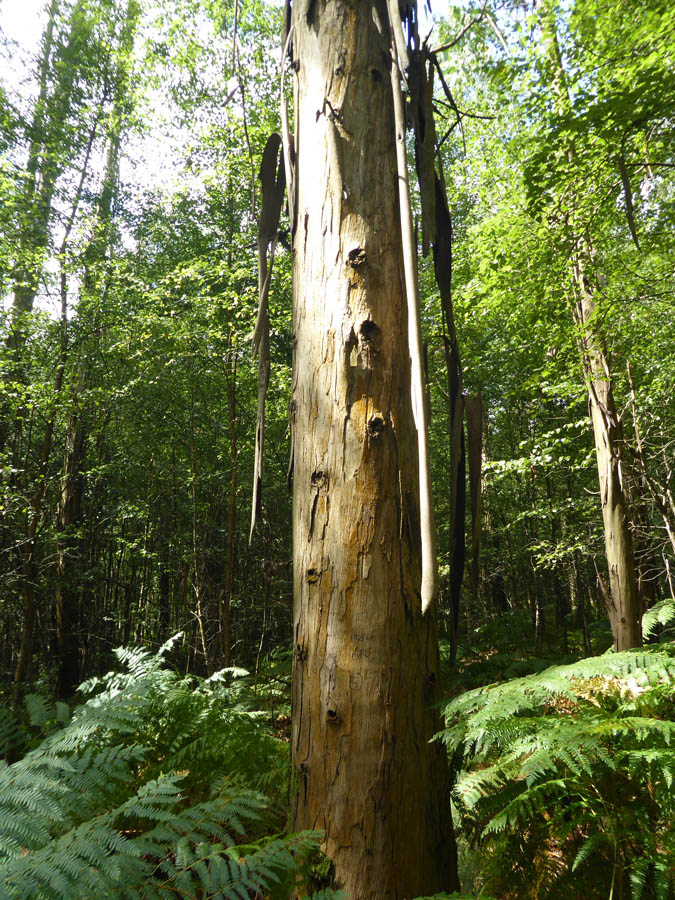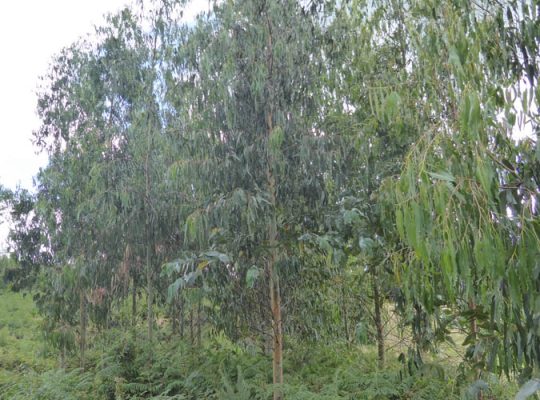Shining gum (SHE)
A fast-growing hardy eucalypt with potential as a timber species which is being grown in extensive plantations in Argentina, Chile, New Zealand, Portugal, Spain and South Africa mainly for wood pulp. Currently being evaluated in Britain but is known to be less cold tolerant than cider gum (E. gunnii).
This species is cold limited in Britain and is restricted to mild, lowland sites or those close to the coast. Climate warming may increase potential for utilization.
Shining gum is categorised as a Secondary tree species. These are species that have demonstrated positive silvicultural characteristics in trial plots but gaps in knowledge constrain wider use. The species are being actively evaluated to increase understanding and inform future deployment.





Range
Australian species native to the mountain ranges of New South Wales and Victoria.
Provenance Choice
Shining gum has been trialled in Britain and been found to be hardy to about -12 °C. Use cold hardy provenances which are likely to be obtained from high altitude stands in Victoria or seed stands in Tasmania, New Zealand and Chile.
Key Properties
Site Requirements
Best results are likely to be confined to milder western and coastal locations in Britain. Avoid frost hollows and known localities for winter cold. A very fast-growing light demanding species with good stem form, can withstand some exposure, and produces a high-quality fibre. It will grow best on soils of poor to medium soil nutrient regime and fresh to moist soil moisture status (i.e., it prefers wetter sites than cider gum). Not suited to drier or nutritionally very poor soils, to peats or to alkaline soils.
Further detail on the site requirements of shining gum in current and future climates can be examined using the Forest Research Ecological Site Classification Decision Support System (ESC).
ECOLOGICAL SITE CLASSIFICATION TOOL
Silviculture
Shining gum is a strong light demander and should not be planted in shade. For planting, use cell-grown planting stock; good weed control is essential for rapid establishment. Extremely fast early growth means (a) that weeding will only be needed for 1-2 years, and (b) young trees are prone to windthrow; the latter can be mitigated by soil cultivation to promote root growth. A dense heavy crown develops early and depending on spacing can shade out competing vegetation in just a few years.
For biomass 2 m spacing is ideal. There is little experience in Britain with thinning and longer rotations, but eucalypts are crown-shy and keeping trees well-spaced/thinned is probably desirable. There is limited data on productivity but one stand of shining gum in Kent achieved a yield class of 40 at 8 years. There is no reason other stands in suitable conditions in southern Britain could not achieve the same.
The response to coppicing is uncertain. It is one of the few eucalypts that may not throw coppice when cut to near ground level, but it will produce numerous stem shoots if the stump is left high (>30 cm).
Pests and Pathogens
Phytophthora root rot can occur, but other epidemics of foliar and canker diseases are known. Various Mycosphaerella pathogens have proved highly damaging to shining gum plantations in Tasmania. Mycosphaerella juvenis has also proved to be such a serious disease of shining gum in South Africa that only certain provenances can be grown. The most common disorders of eucalypts seen in Britain tend to be common decay fungi. The species is highly palatable to deer and other browsing mammals.
See our other tools and resources
Further Resources
Internal
In addition to the general sources of information for species the following are useful for shining gum.
Brooker, M.I.H. and Evans, J. (1983) A key to Eucalypts in Britain and Ireland: with notes on growing eucalypts in Britain. Forestry Commission Booklet 50. HMSO, London.
External
In addition to the general sources of information for species the following are useful for shining gum.
Evans, J. (1986) A re-assessment of cold-hardy eucalypts in Britain. Forestry 53: 224-242.
Purse, J. and Leslie, A. (2016) Eucalyptus – Part 1 Species with forestry potential in the British Isles. Quarterly Journal of Forestry 110 (2): 88-97
Purse, J. and Leslie, A. (2016) Eucalyptus – Part 2 Findings from trial plantings and silvicultural requirements in the British Isles. Quarterly Journal of Forestry 110 (3): 161-168
Reynolds, C. et al. (2021) Providing the evidence base to diversify Britain’s forests: initial results from a new generation of species trials. Quarterly Journal of Forestry 115 (1): 26-37.




